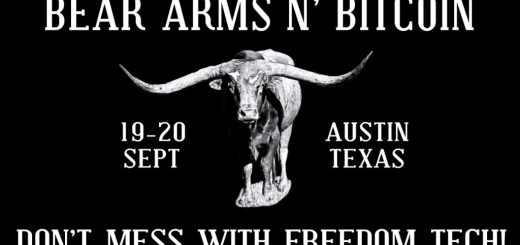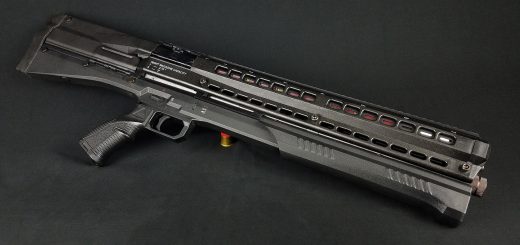Here Go The TEC-9: The History of Intratec
Have you heard of the Xerox Effect?
The Xerox effect is a concept in that a word, term or a phrase can become so commonplace that it becomes vernacular rather than just what it is. When you need to doctor an image, you don’t ever say “doctor” an image, it sounds fake, phony, false. Your brain shortcuts to something that’s connected to that concept, something you know to use for that. Photoshop. Adobe doesn’t like how you do that, but your brain naturally goes to. It finds convenient anchor points to grip onto and overtime you forget that anchor point is there. Soon the anchor point is the default point, passed on over and over again. You’ve seen it happen with everything from cell phones to cars, and an industry filled with famous names like firearms is no outlier from this either. We’ve seen the AR-15 go from unknown to a failed attempt at maligning it in the past decade and a half, and in the same way other designs have risen and fallen in the same streak and context. The AK-47, the MAC-10, the Uzi, the Glock, so on and so forth. No gun is simply a gun anymore, it’s a 9 or a .45. To that end, it’s no surprise, but what’s impressive is how one design still holds that same sort of reputation.

The TEC-9.
“Nigga respect mine, or anger the Tec-9” – Raekwon The Chef
“Take it from the Tec-9 holder.” – Madvillain/MF DOOM
“My man Inf left a Tec and a 9 at his crib, turned himself in.” – Biggie Smalls
Now it’s one thing to simply cite classic rap as my point, but that is the tip of the iceberg. Despite the history of the TEC-9 being a slide into obscurity, the gun still carries a legacy as a gangsta classic to this day, to the point that it’s begun to transcend the language itself. Rap music in other countries and languages mention the TEC-9, from Spain, Germany, Russia, Brazil and so on. And all of this for a mediocre 9mm blaster we only know from said music. So today, we’re going to peel back the history behind the TEC-9, and how a Swedish company based in Stockholm created everything from Kel-Tec to the 1994 AWB all with one design reworked a half dozen times.
Ego Trippin
For all the places a story such as this would start, you wouldn’t expect it to be in a place like Sweden. Doesn’t click for a gun made famous in the heat of Southern California. But Sweden’s ready supply of iron ore and steel production made the place a breeding ground of high quality steel, and with that high quality metal manufacturers and down the chain of industry to firearms. Firms such as Carl Gustaf Werks, Husqvarna and so on would fill the market and dominate Swedish firearms production for the next hundred years or so, and into the Cold War era there was more and more of an incentive for the neutral Swedes to break that trend to sell weapons abroad. That left those other companies to lean on the art of creative prototype work, and no company exemplified that more than Interdynamic AB.
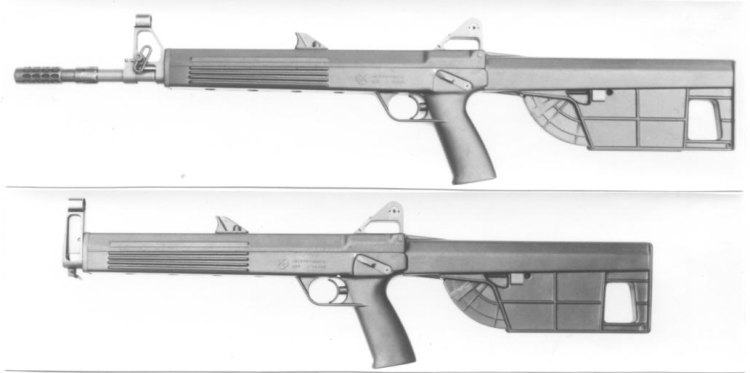
Based in Stockholm, founded by George Kellgren, the firm was a foremost technical house for producing avant garde advanced designs to fit specific roles. None of these ever seemed to be roles for any real use but they are quite wacky. Their first major product was the Interdynamic MKR. Around the company’s founding in 1977, as the 5.56×45 cartridge was gaining popularity and 5.45×39 aimed to do similarly in the Eastern Bloc, Kellgren and his design team worked up a rifle concept that aimed to tweak the concept. And by tweak, I mean very much tweak.
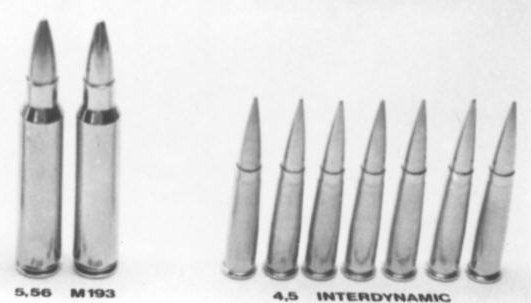
The MKR was a bull pup, polymer frame and furnitured rifle firing a hotrod 4.5mm high velocity bullet based on, of all things, .22 Winchester Magnum. They took the standard .22 WMR, necked it down to 4.5mm and then fitted it with a new bullet. It did fulfill the goals of a high velocity, low recoil rifle with the added bonus of 50 round magazines, but the concept was too wild to catch on in any capacity. Returning to the proverbial drawing board, Kellgren and his team would settle on a new concept and one that was becoming quite popular in Europe at the time.
Submachine guns.
In 1980, a six man team of Iranian Arabs would take the Iranian Embassy in London hostage, holding the staff at gunpoint and demanding sovereignty for the Khuzestan province of the recently created Ayatollah dominated Iran. A motion and concept that a nation like Britain was not going to be able to leverage after the fall of the Shah, and the failure of America’s Operation Eagle Claw to reaffirm Western control in the nation. Concessions in a minor sense were made, but by day six of the siege, both the hostage takers and the negotiators were running out of options. In a fit of rage, the hostage takers killed one of their hostages and threw his body out into the streets.The British response was to send in the SAS, who over the past decade had been modernizing their tactics to fit a new proper counter terrorist role and one that Britain had been eyeing to show the world properly. In the wake of the Munich Crisis, every major European and world power had begun investing in special forces groups, and units like the GIGN in Loyada and the GSG-9’s successful raid of Lufthansa Flight 181 had proven the concept for this new type of warfare. But not on TV for the world to see. With the cameras rolling, the SAS would begin Operation Nimrod, a daring raid on the Embassy with the goal of neutralizing the hostage takers, rescuing the hostages and showing the world what exactly the SAS were capable of.
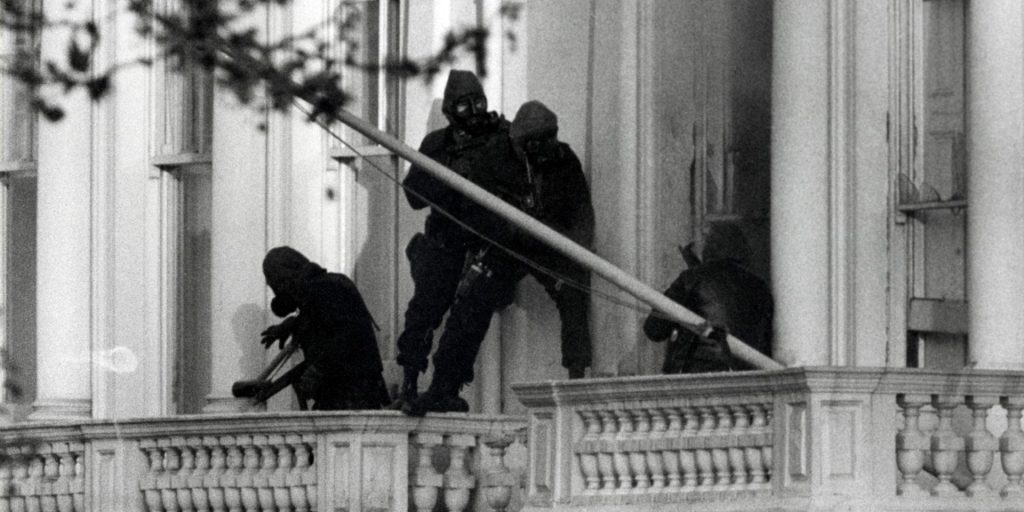
In seventeen minutes, the SAS had neutralized 5 of the 6 hostage takers, saving 24 of the remaining 25 hostages with one killed by a hostage taker and another wounded in the raid. The professionalism and striking appearance of the SAS in the raid alongside the success of Operation Nimrod solidified the concept of special forces, and in a way that was now being repeated by several hundreds of television stations and millions of sets across the world. If there was a time to get into submachine guns, it was now. The issue was that the market was now incredibly dominated by designs. One of the biggest and one who benefited the most from Nimrod was the H&K MP5, the premier submachine gun of choice for any special forces or police agency. However there were a smattering of other designs following down the line for prospective police departments and newly burgeoning special forces groups.
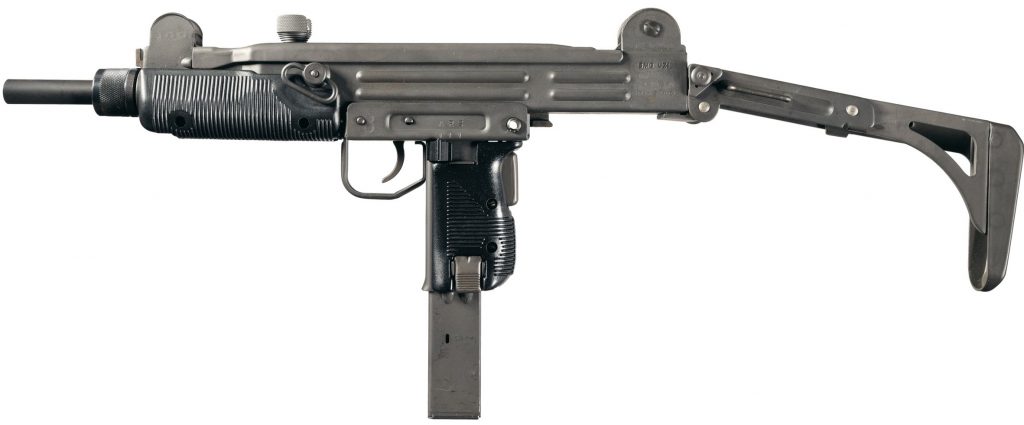
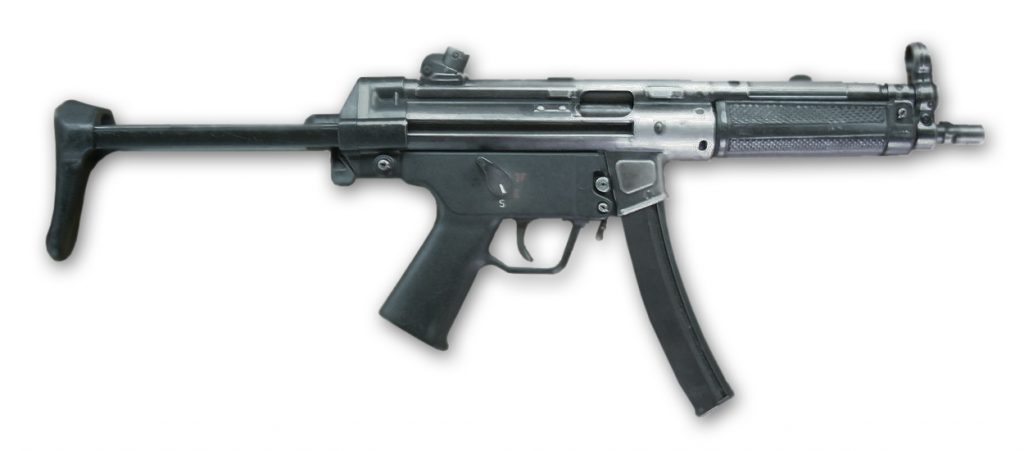
These ranged from more vintage but applicable platforms like the IMI Uzi, Beretta PM12S or Walther MPL/MPK. However there was a burgeoning class of designs built around certain gimmicks. The SITES Specter and it’s 50 round coffin stack magazine, the Finnish Jatimatic and it’s now iconic strange shape to reduce muzzle flip or the Calico series and it’s high capacity helical magazines. Gimmicks were proving to get at least a few contracts, so Interdynamic aimed for that alongside a reliable design. Almost 40 years prior, Sweden had developed a new submachine gun to give themselves a domestic option to the Suomi KP/31 that had been adopted and produced in house for the Swedish military. Aiming to copy many of the concepts of simplification and reliable function that were now dominant in European submachine guns, they’d develop the M/45 Carl Gustav. The iconic Swedish K. And in 1981, Interdynamic would develop their own submachine gun on that action. The Interdynamic MP-9.

Using a modified version of the Swedish K action, making the overall diameter of the receiver wider to shrink the gun down, the new MP-9 was a tiny little machine pistol. It had a forward foregrip, a stubby heat shield, threaded barrel, collapsing stock akin to the M3 Grease Gun and one critical issue. It fired way too fast. Like the MAC-10 and most submachine guns in this size class, the MP-9 was a fast firing magazine burner, and while that could be argued as a good thing, for a role as a precision SMG for special forces, that was not a good idea. However, they weren’t too worried. There was a market that was open to that kinda thing.
America.
Because I Ain’t A Hater Like You
For the past few decades in America, the MAC-10 submachine gun had been the pioneer of the concept of a new age machine pistol. A compact, large caliber weapon with a high rate of fire and ergonomics that didn’t exactly lend it well to good, accurate function. Absolutely useful for ventilating cardboard boxes and making them into scrap paper, but one who’s very function had begun to hobble it’s chances at any other sales. By the late 70’s, the Military Arms Corporation and later new owners of the patents to the MAC-10, RPB were facing a bit of a problem selling their design. They had buyers, but they didn’t have reliable sales.
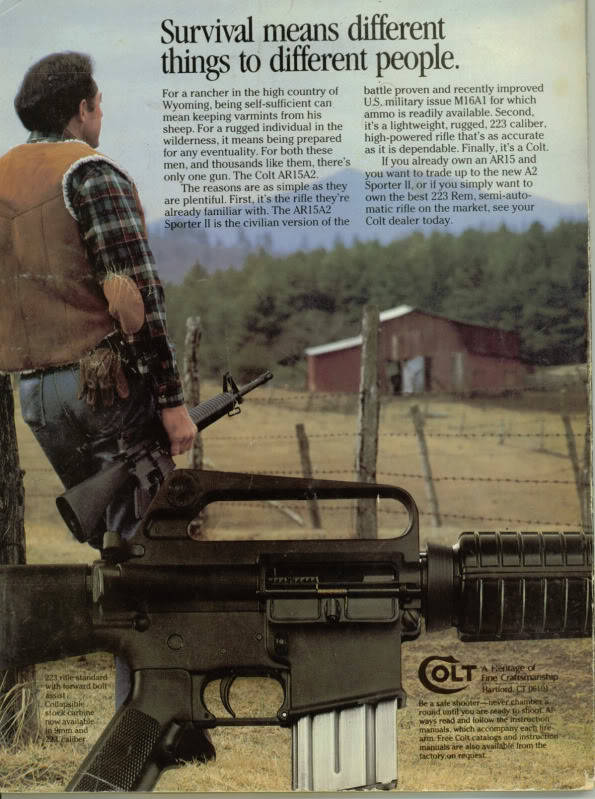
America at this point was mostly still a fudd extreme state, with most average gun owners being interested in hunting first and foremost. The so-called “black guns” of the era were usually limited to police and military sales, although a foothold was gaining in the form of proto-survivalists. The roots of modern American gun culture were that of dorky middle aged men with pudgy bellies reading Soldier of Fortune and buying MAC-10’s on the side. No complaints here by the way, it just shows that not much has changed. This was proving to be lucrative to companies like RPB industries, and so they’d begin to make dumbed down versions of the same MAC-10 and 11 designs. These were functionally the same guns, sans stock and made semi-auto. It was a concept that worked, and one that Interdynamic would copy. In 1981, Interdynamic AB would set up an America based holding company by the very special name of Interdynamic USA, helmed by both Gordon Kellgren as well as Carlos Garcia. Garcia was a Cuban-American immigrant who began running a series of gunshops in southern Florida catering to Spanish-speaking customers, building a small corporate empire at the same time. Garcia wanted to expand his business beyond selling firearms, and Kellgren needed capital and a business partner.
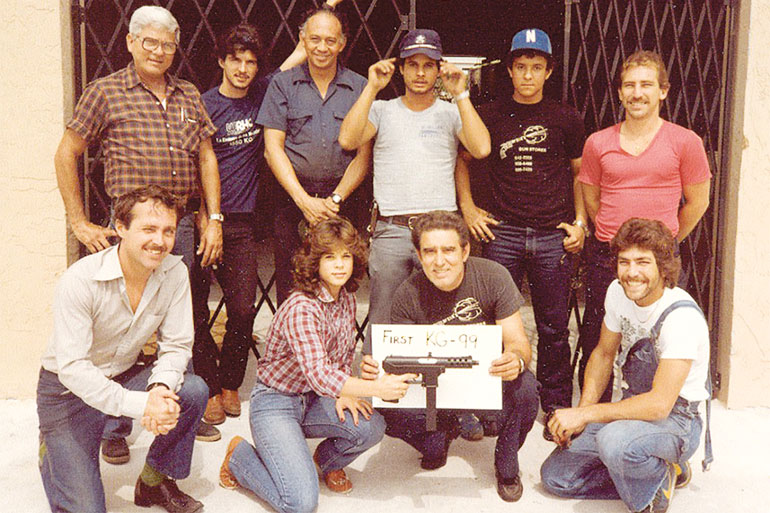
These two men would revise the initial MP-9 design, ditching any feature that would get it labeled as an SBR such as the foregrip and stock, and making a new model, combining their names together and making the KG-9. This is the first foray of the modern TEC-9 as we know it. By and large, the KG-9 is effectively just a dumbed down MP-9, without the stock and foregrip and with a semi-auto only fire control group. The safety was nothing more than the MP-9’s style of a cut in the receiver that the bolt knob clicked into like the Sten gun, the firearm itself was mostly polymer with barely phosphate coated black metal components and arguably is still one of the most basic pistols ever sold on the American market. That being said, you might’ve noticed a critical detail.
It was still open bolt like the previous MP-9.
What RPB as well as Interdynamic were doing was selling simple open bolt pistols on the market. Which if you know anything about pistols, you know many don’t do anymore. And the reason became very acute as the Miami Drug Wars became more and more volatile. Those MAC-10’s were already on a watch list due to their use in the assassination of drug lord Jimenez Panesso in ‘79, and a large amount of open bolt pistol versions had been caught in the hands of a local drug gang. While the new KG-9 was too new to show up in this, it was beginning to bleed over. And with their area of manufacture being Miami itself, they’d be handed an ATF requirement. Either change the design or face a legal suit and loss of their licenses for manufacture. They’d elect to fix the design. Modifying the KG-9 with a free floated firing pin, closed bolt operation and a new fire control group, they had a closed bolt KG-99. And free from the ATF wraith. In comparison to RPB Industries who’d game the system straight to the 1986 Hughes Amendment and run themselves into the ground. Interdynamic USA would live.
It would see their other big change as Mr. Kellgren would leave the company, going off to create another technical firm by the name of Grendel. This would work on a variety of kooky pistol designs, ranging from compact .32 and .380 ACP pocket pistols, high end bolt action rifles like the SRT to oddball designs in .22 LR and WMR. Eventually this would be closed, and he’d make a new firm. By the name of Kel-Tec.

Yes, really. The KG-9 was how George Kellgren got his visa into the United States and would help develop his career for making firearms in America. There is a direct link between this series of guns and everything from the P-11 to the KSG.
This now left Interdynamic USA in an interesting position. Down their lead designer and their biggest connector between the former company and the new current one, and with a steady but sluggish series of sales on the open market, they’d go for a rebranding. A wise move to try and sever themselves from the ATF stink they had prior. In 1984, they’d rebrand themselves with a slick new name for a slick new decade. Their name now was Intratec, and their design would be rebranded under that new moniker.
The TEC-9.
And It Goes A Lil’ Something Like This
At this point, Intratec reached a point of relative stasis with the introduction of the TEC-9 as we now know of it. It comes out with a wide number of options including slings, barrel extensions, suppressors and a multitude of finishes and two types, the standard TEC-9 and the TEC-9 Mini without the shroud. And rather than try to list out the various small details about the TEC-9, I might as well address the big elephant in the room. Namely, why.
Why DID the TEC-9 succeed?
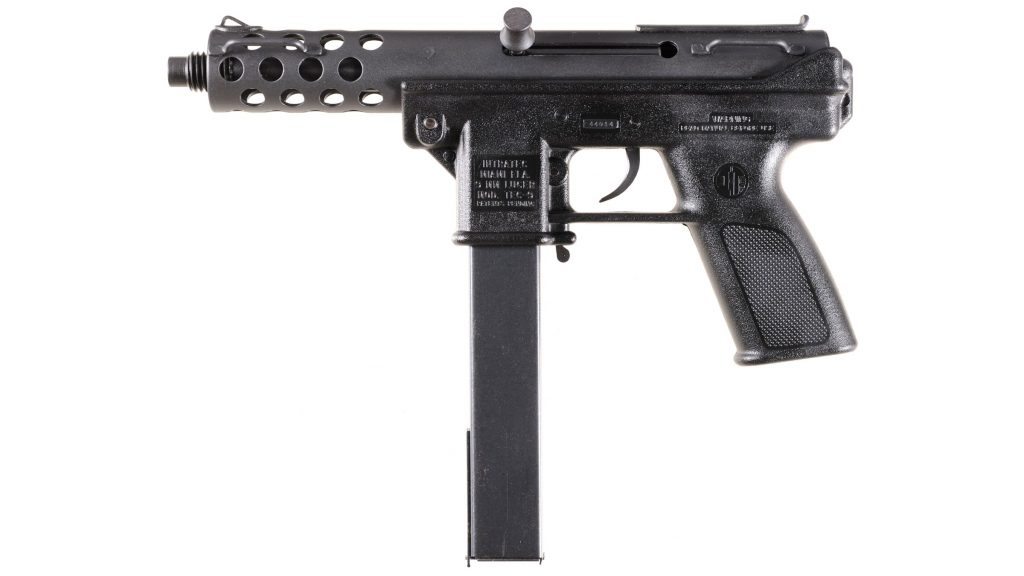
Well, timing and a few specific features helped the TEC-9 stand out in the late 1980’s gun market, as well as a constant and on-the-nose marketing campaign courtesy of Garcia. For the most part, the TEC-9 was a reasonably popular 9mm pistol, selling around 250,000 units from 1987 until it was “replaced” in 1994. Overall reports of the handgun from the time aren’t particularly flattering, but that didn’t stop sales from going on. Garcia and Intratec were relentless with their marketing, constant ads posted in Guns and Ammo and Soldiers of Fortune touted the TEC-9 as a rugged and reliable firearm. They even released a pin-up calendar featuring models posing with their products. But even the lipstick doesn’t explain those root reasons as for why these moved off the shelf. And the reasons are thus:
1: It was one of the few guns of the era with very common high capacity magazines. This is the age prior to the Internet and just around the same time as the Glock 17, so high capacity was still locked in the 13-15 round range. Sure, extended magazines did exist, but they required you to dig around for them either through gun part magazines or at gun shows. And even then, they tended to only be +5 or +10, giving you a whole 20~ rounds for your new 92F. The TEC-9, out of the box, came with the standard 32 round magazine. And Intratec sold almost every variant there-in, from a slim 16 rounder, a 20 rounder, the aforementioned 32, a 40 rounder and a 50 rounder that can probably be used as a blunt object. It meant that, if you were in the market for a high cap, Intratec was your man. And it had a slim bit more reliability than guns like the Cobray M11/9.
2: It was filthy fucking cheap. In this time, companies like IMI, H&K and so on were getting in on the proto-PCC game with their own civilian versions like the Action Arms Model B, the HK94 and odd ducks like the SITES Spectre pistol. However, these were usually pricier guns with much more limited sets of reseller companies, and with higher prices. An Action Arms Uzi Carbine would run you around $400-500 dollars, around $1,000 dollars in today’s money. Other PPC’s like the H&K 94’s were more, easily going up to $430 dollars. A TEC-9 retailed for a whopping $100-150. That, in modern money, is a solid $350. So what you got was a blowback 9mm with a threaded barrel, shroud, sling swivels, high capacity magazines and a few spares for the price of a used Glock nowadays.
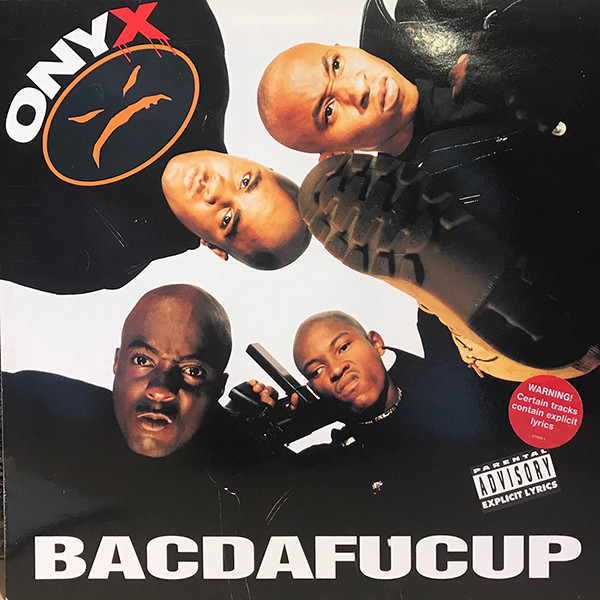
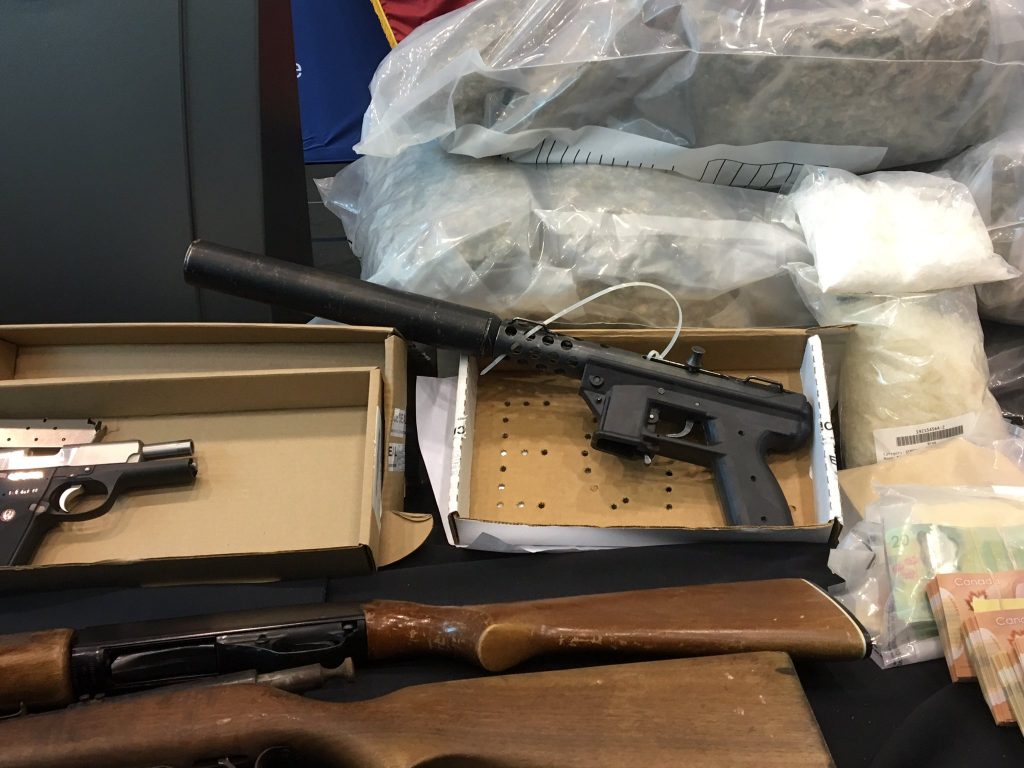
The cheap cost combined with high capacity magazines soon made the TEC-9 a highly popular firearm for the burgeoning street gangs and drug cartels that’d punctuate the rising Drug War in the mid to late 1980’s. As the sheer quantity of their funds increased, so too did purchases of any and all weapons they’d need, and the TEC-9 struck a variety of niches. It was a high capacity 9mm, at a relatively affordable price and it was relatively concealable on a person either with a baggy jacket or hoodie. As such, the TEC-9 would begin skyrocketing in unsavory popularity. Between 1990 and 1993, the TEC-9 series would make up around 22% to 26% of the ATF’s trace requests from American police departments, and when a survey was done of 33 American cities in regards to the arms confiscated off of suspects, the TEC-9 made up a solid quarter. Intratec wouldn’t hide from the spotlight on the issue, however soon the spotlight’s intensity would shine a bit brighter.
On January 7, 1989, in the city of Stockton California, at the Cleveland Elementary School just prior to noon, a van loaded with fireworks was set on fire. In the commotion and during recess, a man by the name of Patrick Purdy would open fire on the students crowding around the playground, alongside anyone in his way. In three minutes, he had fired 109 rounds from a Norinco Type 56S rifle, killing five children and a teacher and wounding around 32 others. Most of these children were Cambodian or Vietnamese, the sons and daughters of immigrants who had fled the fall of their nations in the 70’s. Before police could detain him, Purdy would then shoot himself with a concealed Taurus PT92 handgun. By the end of the day, the media had labeled it as a mass shooting and calls began to be aired for change.
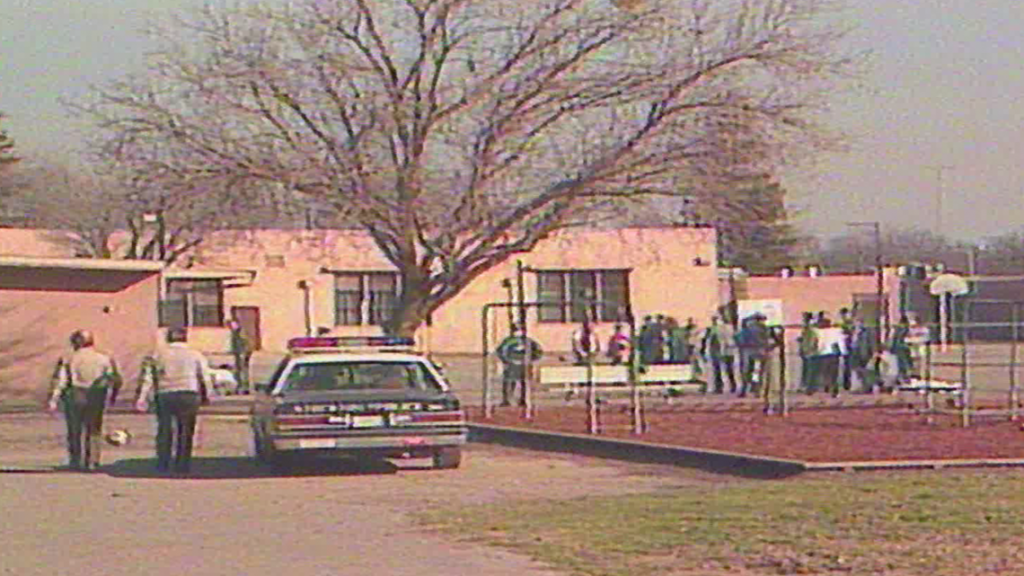
The Cleveland School Shooting is a historical moment that’s been lost in the haze of similar violence that became commonplace in the 90’s and 2000’s, as it was one of the first to achieve widespread notoriety and condemnation by the press at the time. It is the prototype to come for the American mass shooting, and its shooter himself was equally the same prototype.
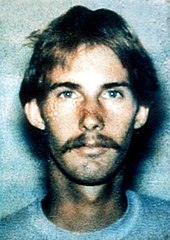
Patrick Purdy was the son of a soldier and a mother who divorced his father after he threatened her life on several occasions. His mother would soon bounce from husband to husband and from his birthplace of Tacoma, Washington down to California. His childhood was marked by physical abuse from his mother and many visits by child protective services before being kicked out of his home at age 13 and living homeless on the streets of San Francisco, moving back with his father and developing a chronic addiction to both alcohol and drugs. His later teen years were pockmarked with various arrests ranging from underage drinking to vandalism, maintaining a chaotic lifestyle before attending classes for welding in 1987. This attempt to ground himself with his work, drifting across several states and working as a boilermaker and machine shop attendant. However, the constant reminder of his failures always burned him, and it would drive him towards resentment of Asian American refugees that were becoming common in California at that time, in the wake of the Vietnam War and Pol Pot’s regime in Cambodia. This resentment combined with his insecurities reached its breaking point, when in December he would purchase his weapons of choice in Oregon and rent a hotel room in Stockton. A hotel room that he’d never return to.
California legislature members Mike Roos and David Roberti would draw up the first American AWB, the 1989 Roberti-Roos Assault Weapons Ban in response to the media and pubic outrage to the shooting. This piece of legislative documentation would outright ban 50 different firearms by name, including the Norinco AK’s that were used in the shooting among everything from FAL’s to the Beretta AR-70. It also would be the first legislation to define an “assault weapon”, citing details like accepting a detachable magazine, having an external pistol grip, a folding or telescoping stock and so on. The detail of which every major media outlet has leaned on to define and redefine the “assault weapon” to this day. And in that list of firearms banned, it would also include the TEC-9 by name. However, the TEC-9’s feature set was flexible enough to just be reworked to not violate the R-R AWB.
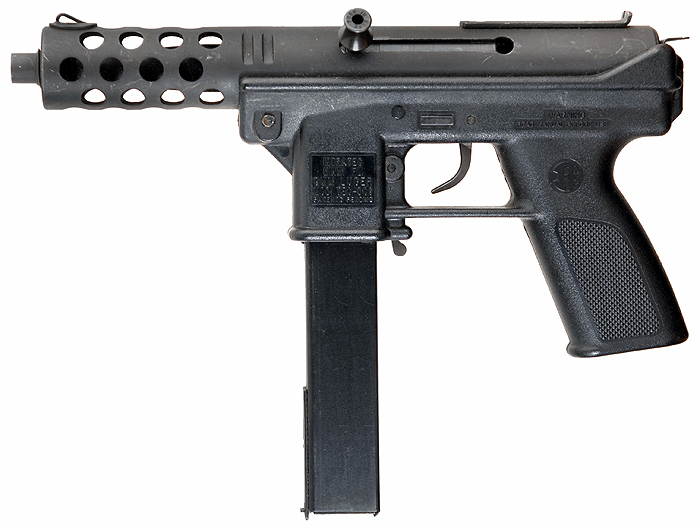
In 1990, Intratec would release a new model by the name of the “TEC-DC9” that amounted to nothing more than a TEC-9 with a different sling swivel set up, which allowed the handgun to sail directly past the AWB. The first case of ban lawyering in American history, and one copied by a variety of companies following it and the Bush Import Ban of the same year. Intratec’s fortune were still fine, the company was now operating with 70 full time employees and good profits, but interference was becoming more and more commonplace. An undercover ATF agent would try to buy a batch of TEC-9’s, intending to “sell” them abroad. While Garcia did not bite on the bate, his engineer and ad rep would and plead guilty to charges of conspiracy to transfer machine guns. This combined with a borderline daily amount of calls from the ATF for traces began to stack up, and Intratec was beginning to reach a problem. And soon they’d be caught up in one when a TEC-9 was used in a mass shooting.
Mind Of A Lunatic
Mass shootings as a phenomenon are not new or an American specific concept or incident, you can, have and certainly will see them crop up in a wide variety of places, regardless of laws, police presence and the laws based around firearms. Massacres with firearms are no less common or prevalent than any other kind of massacre, both in history and in modern life. But, in the haze of a tragedy, in that aftermath when people want and wish to pin blame on something, they always will choose the simplest thing. The tool. A shoddy workman always blames the tool. Rather than do that, this segment exists to explain the true “why” in the boom of mass shootings starting in the mid 80’s and increasing over the 90’s and into the 2000’s and how it became such a common phenomena in the United States.
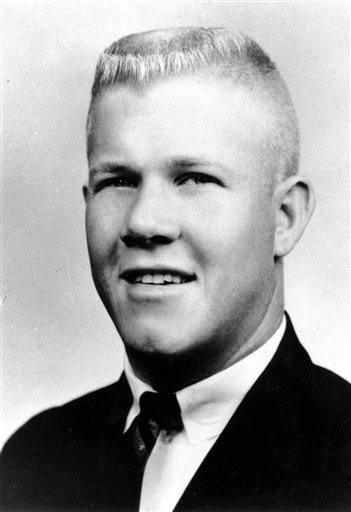

For Americans, the first proper mass shooting was in 1966 at the University of Texas. Charles Joseph Whitman, an engineering student and former US marine was a atypical golden boy in a post-WWII America, and one rife with issues behind the scenes. The son to a violently abusive perfectionist father, Charles lived in constant fear and dread of becoming like his old man. During his college career, he balanced a constant mixture of a turbulent home life as his mother sought a divorce from his father, his college classes, re-enlistment calls for the USMC due to the Vietnam War and sudden and unknown violent thoughts and outbursts that frightened him immensely. Over 1965, Whitman would see a variety of psychiatrists and doctors on compass to find a solution to his problem, and none could pin down the issue. And so he attempted to forge his path to health alone, which did nothing but send him tumbling towards a path of self destruction.
In the early hours of August 1, 1966, he would drive to his mother’s apartment, knocking her unconscious and killing her with a knife. He would then drape her in sheets, and wrote in his personal journal “I have just taken my mother’s life. I am very upset over having done it. However, I feel that if there is a heaven she is definitely there now. I am truly sorry. Let there be no doubt in your mind that I loved this woman with all my heart.”
He would return home to his own apartment, killing his wife in a similar fashion and covering her up in a sheet just the same. He’d write a similar notebook addition, “I imagine it appears that I brutally killed both of my loved ones. I was only trying to do a quick thorough job. If my life insurance policy is valid please pay off my debts, donate the rest anonymously to a mental health foundation. Maybe research can prevent further tragedies of this type.” After calling into his mother and wife’s workplaces claiming they were sick, he would leave notes for his brothers, make one last note before heading to the University of Texas. Making his way to the clock tower in the late morning, he would begin his ascent by killing the observation deck receptionist, barricading his position and then attacking a family of four who found his position. Once done, he would walk out onto the observation deck and begin shooting at any and all people he could spot.
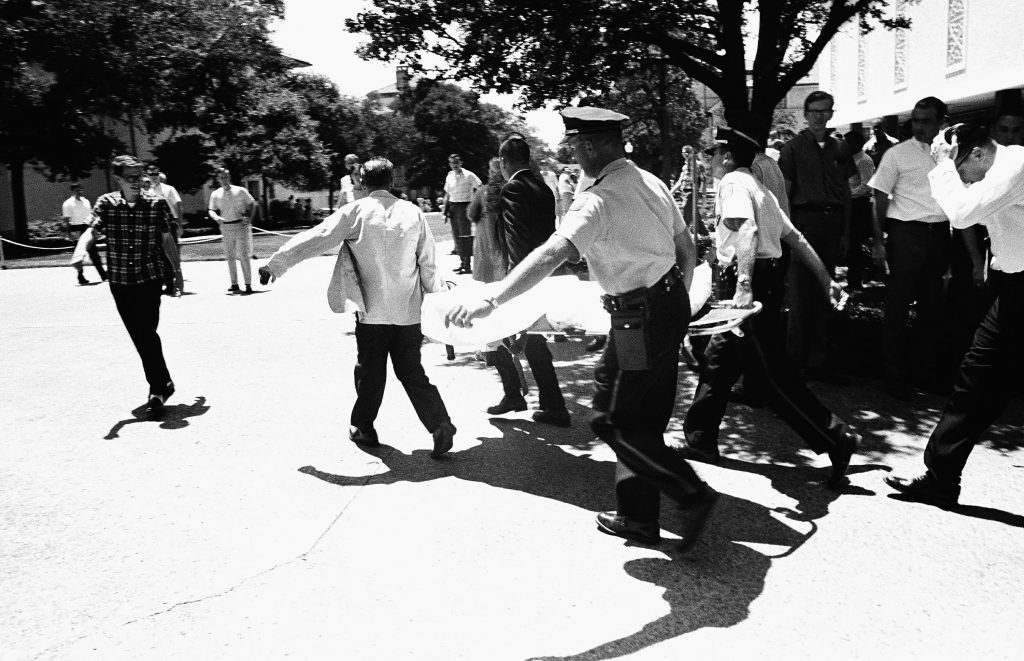
Austin police would respond, but struggled to engage a target as high up as Whitman, relying on trying to close the gap and provide counter sharpshooter fire from a plane. They’d distract Whitman as other officers scaled the tower, and at 1:24 PM, 96 minutes after Whitman had taken his first shot, he’d be killed by a blast from a shotgun. At the end of the day, Charles Whitman had taken 18 lives and had injured 36. In the wake of the incident, a post-mortem autopsy found the source of Whitman’s mental issues. A brain tumor in the white matter above his amygdala.
To understand the American mass shooting, peeling back layers upon layers of media and governmental misrepresentation, you must focus on the root causes that drive the shooters themselves to commit the acts. No person wakes up one day and elects to go on a spree in the same way no person wakes up one day to begin killing other people or commit an act of terrorism. Like all human endeavors, it is one built over the weeks, months and later years. And to answer the constant “why” in the wake of a tragedy. You must identify the “Big Three” of a mass shooting. One: Underlying mental illness. The fundamental thing that ties almost every single mass shooter to one another is mental illness, and rarely through faults of the shooters themselves. As it was proven with Whitman and from Whitman to Lanza, Purdy to Cho, the underlying connector with all of them is mental illnesses that cause them to think erratically and in increasingly more paranoid thought processes. What exact illness is up for debate, some are psychotic, others paranoid schizophrenics, but the underlying thread is mental illness, stress and a feeling of desperation.
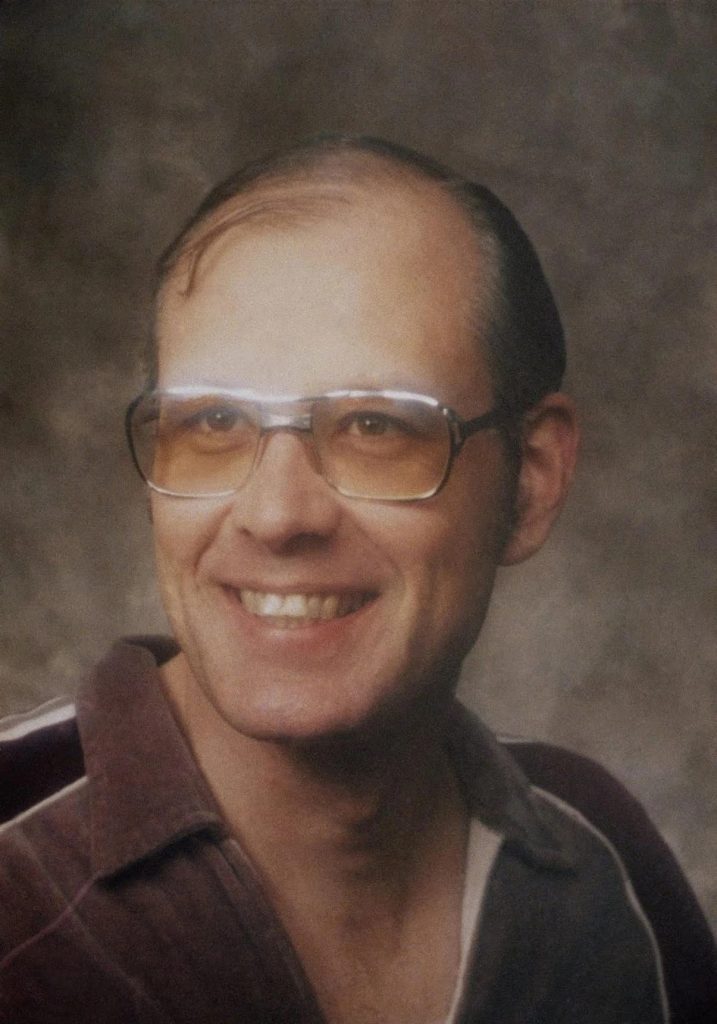
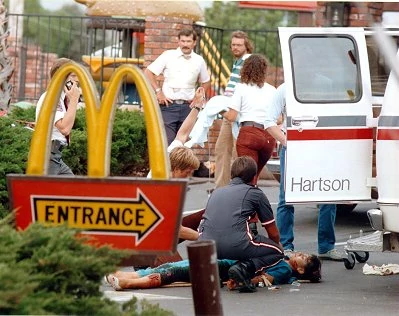
Two: Lack of an ability to get help. On July 17, 1984, a man by the name of Phil Huberty would call in to a local mental health hospital in San Diego, California. Huberty was a former embalmer and later welder, hailing initially from Ohio before moving out with his family to California to keep up with work. Huberty had been hearing voices, and after being fired from his job became concerned with his mental health enough that he wanted a proper consultation. However, due to his calm demeanor when calling as well as his name being put down incorrectly, Huberty would be placed on a non-crisis inquiry with a 48~ hour window to get a call back. Despite waiting for his call for several hours, he wouldn’t get one. On the next day, he would walk into a McDonald’s in San Ysidro, California and open fire, killing 21 people and beginning a siege with the SDPD for the next two hours before being killed by a SWAT sniper after passing by the drive-thru window of the restaurant. It was one of the deadliest mass shootings up to this point, and while it is hard to simply say that a single phone call could’ve stopped it, it’s a distinct possibility.
Mental health is a terrifying concept for anyone to discuss, the core philosophy of a human and the “self” becoming warped by things outside of your control. To those dealing with it, it is as if your world is being grabbed and destroyed by things out of your hands, and to those outside, it is as if you as a person are being shifted and losing themselves without anything you can do to stop it. In moments like this, in times of crisis, the critical thing you need is something to ground yourself. Something simple, benign, and reliable. Help. With a lot of the mass shooters in modern memory, a recurring issue is that of them wanting help, whether it be a support network of friends and family, or one of proper mental health professionals. Whitman sought out psychiatrists, Huberty sought out a mental health clinic, and so on down the line. While many would not seek out help, almost all of them modern mass shooters with mental illnesses needed it to some capacity. It is not a perfect solution, nothing ever is especially with the delicate balance of brain chemicals that make a functional human being, but the isolation they felt both in regards to their illness as well as in the reactions of people regarding said illness was a negative feedback loop.
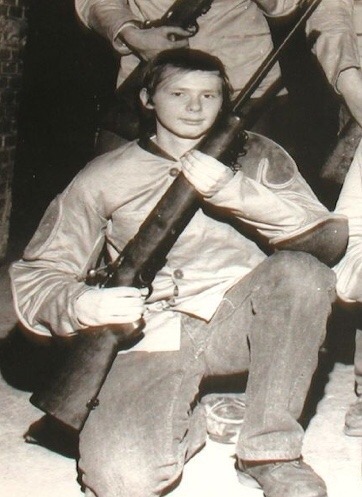
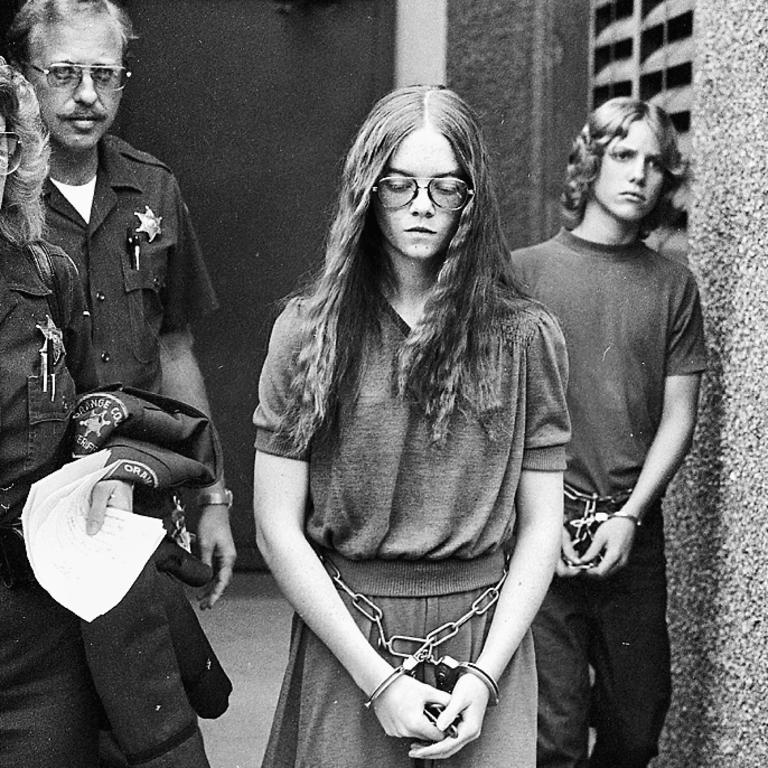
And finally there is Three: Mass media. Throughout the 1980’s and into the 90’s, the modern 24 hour news broadcasting system began to be forged, and what was once a smaller and slim scheduling of news soon became a constant barrage from the burgeoning news channels. As a result, for those at home, there was a constant sea of news, tragedy and harmony fed to them at all hours of the day. For those who’s issues in life turn to a desire for revenge, a want of clemency for the slights they felt in life, they would see the cathode ray screen as their chance for a full redemption. Only a few years after Whitman in 1974, a young 17 year old student by the name of Anthony Barbaro would take his father’s hunting rifle to his school in Olean, New York, and following Whitman’s playbook would lock himself in a firing position and begin firing at any targets he could, killing three and wounding eleven. In every aspect beyond certain details, he had copied the playbook of Whitman. Later in 1979, a 16 year old student by the name of Brenda Spencer would open fire at a elementary school in San Diego, also known as Cleveland Elementary. She would kill two, injure nine, have a previous record of severe mental illness due to neurological damage to her frontal lobe during her childhood, and a decade later Purdy would copy her same attack style of opening fire at recess. These two, in an age prior to mass media proved how mass shooters habitually copy each other and cause copy cat killings in their wake long before the rise of mass televised media.
With this new era of constant television news and an endless search for topics to discuss, mass shootings would become the hot button issue and topic and explored for hours on and. And for those at home who harbored the same concepts as those who came before, they saw everything they wanted. Vindication on the screen, their names out for everyone to see and their revenge on those who slighted them legitimized even in death. This fundamental triangle, the Big Three has been the reason for the constant barrage of mass shootings in America. One element leads to another, whether it’s 3-1-2 or 2-1-3. However, due to the uncomfortable nature of mental health that leads to Issue #2, most people vie for easy scapegoats. It’s a comfortable lie instead of an uncomfortable truth. And to that, history repeats.
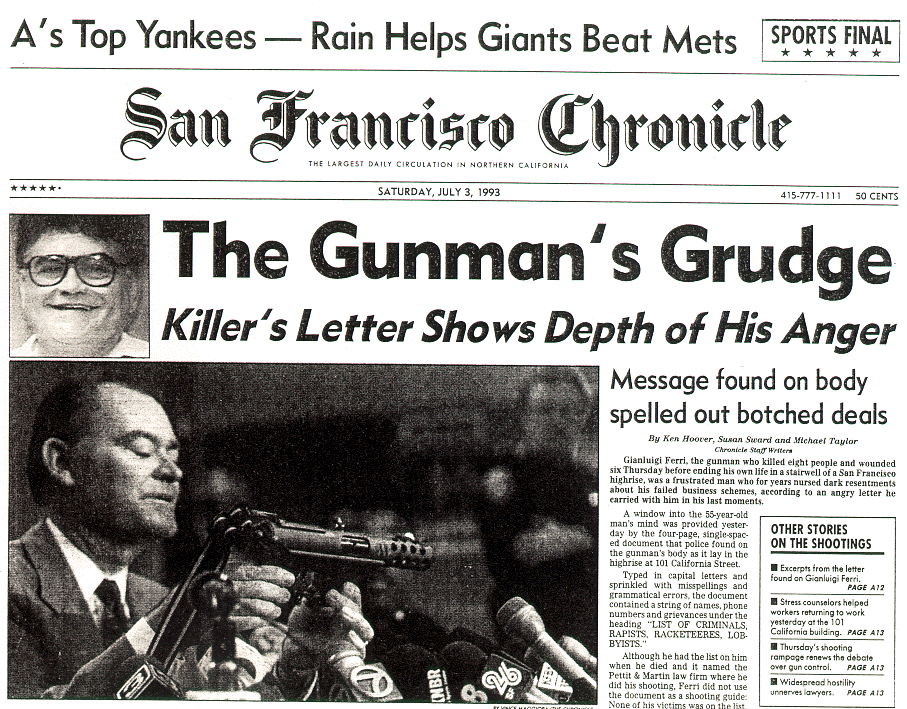
On July 1, 1993, a former businessman entering bankruptcy by the name of Gianluigi Ferri would enter a large corporate office building by the name of 101 California Street in San Francisco. Ferri had been a businessman in the market of real estate, operating a variety of sales of property, homes and such over the 1980’s and had made contact with a firm within the 101 California Street building by the name of Pettit and Martin. When Ferri had forwarded a request for their council in a case, they had elected to send him to an alternative legal council all the way in 1981. 12 years later, following the collapse of his business and a descent into paranoia and fear, he would enact revenge. Arriving at the building with Two TEC-DC9’s modified with a proto-bump fire trigger as well as a single Norinco 1911, he would begin his shooting at the 34th floor of the building and make his way down, before killing himself as the SFPD closed in on the area. All in all, he would kill eight people and injure six. And he had used Intratec’s workaround gun in the process.
In the wake of the 101 California Street shooting, Cali would double down on its laws regarding firearms ownership, as well as revoking a previous law that nullified suits against firearms companies. In response, a variety of lawsuits were leveled at Intratec. This would also be the point where the government would intercede, as the Roberti-Roos AWB would provide the base plate for the newest law to fix American crime. The 1994 Crime Bill. It would include subsections such as expanding death penalty offenses, the “three-strikes” policy, the Violence Against Womens Act and most infamously, the 1994 Federal Assault Weapons Ban. Taking the same base plate of the Roberti-Roos AWB, banning the same weapons named on it and applying it’s requirements to the entire 50 states. While a sunset period was negotiated, it still went into effect and for Intratec, both the TEC-9, TEC-DC9 and even their TEC-22 were listed on the banned list. They needed to change and change fast.

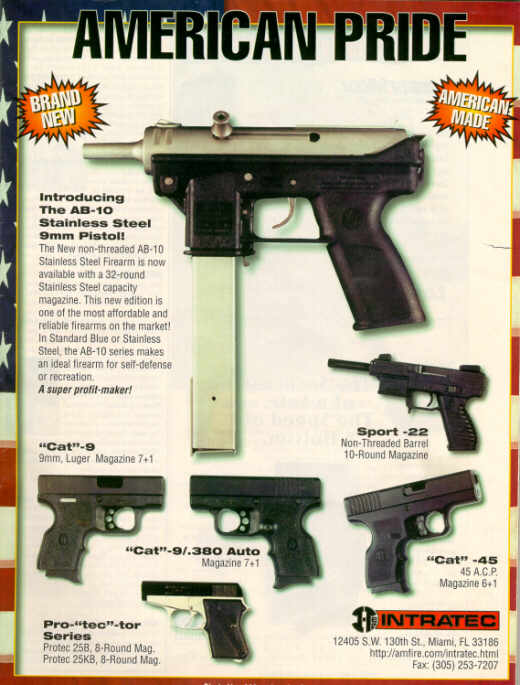
For a start, they’d release a new model of the TEC-9 known as the AB-10, effectively just a TEC-9 Mini without the barrel threading, and since it didn’t have the barrel shroud of it’s big brother was able to skirt past many of the AWB requirements. They’d also expand their business with newer models such as the CAT-9 series, following the trend of post-AWB single stack compact carry handguns such as Kahr’s that were becoming popular at the time. However, the CAT series was hobbled by poor quality construction and a clunky DAO striker fired trigger, limiting it’s interest on the market. They’d also make the “Pro-TEC-tor” pocket pistol, a clone of the CZ-45 .25 ACP subcompact handgun aiming for the Jennings style market. However, the caustic nature of Intratec’s brand name by this point as well as the reputation they now had was becoming a problem. Starting in 1993, lawsuits began to be leveled on the company due to the TEC-9 and it’s involvement both in crime as well as now in mass shootings, backed by the large gun control superPACs of the era. As things began to mount, the biggest blow to both sides would come from Colorado.
You’ve been waiting for me to mention Columbine haven’t you?
Step To Me
April 20, 1999. In the town of Columbine, Colorado, it was just another boring Tuesday. In the late hours of the morning around 11:15 AM, the students of Columbine High School began to enter the cafeteria for the early “A” lunch block. At that same time, a small cache of explosives had been stashed there prior in two black duffel bags. Two students who had not come to school that day, Eric Harris and Dylan Klebold had prepared an elaborate plan to shoot up their school, relying on a variety of improvised explosives to do the job. When said explosives had failed to go off, they went with their backup plans. Starting with a pipe bomb thrown in, and one that had failed to properly detonate, Harris and Klebold would enter the cafeteria and begin opening fire at 11:19.
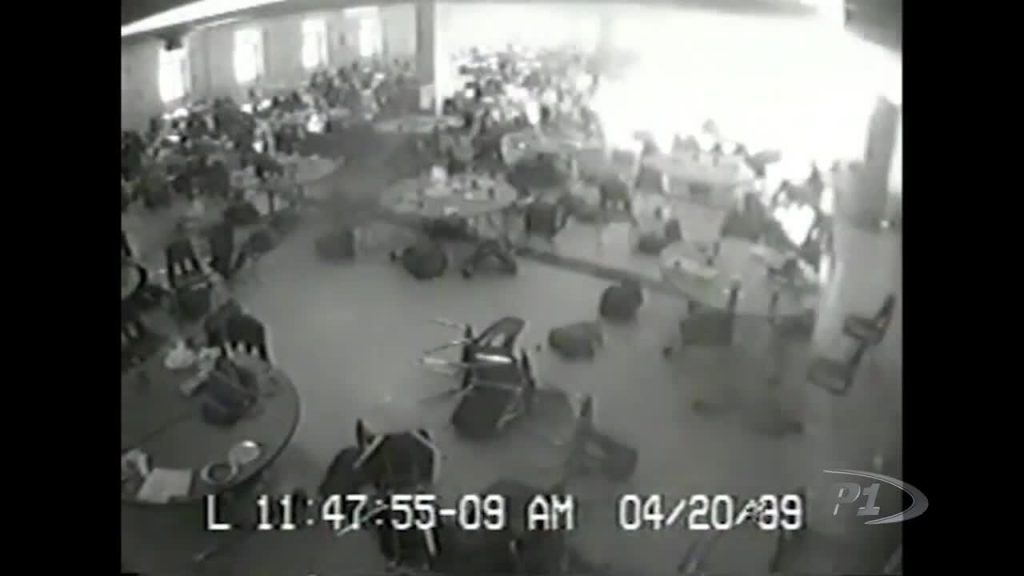
As students evacuated and police began to arrive, the pair would move on to the library around 11:29, having briefly engaged some of the first responders. They’d work down through the library, taunting their fellow students as they fired before leaving at 11:36. As more students fled and more local police arrived, the pair would go to the science wing of the school and attempt to start a fire to make use of their improvised explosive devices, both in the science lab as well as the cafeteria. By 12:00, SWAT team officers had arrived on the scene and had been fired upon by the pair from the library. With themselves now cornered, they would take their own lives at 12:08 PM. In under an hour, they had killed thirteen students, injured twenty four and created the largest media sensation of the late 1990’s. The Columbine shooting.
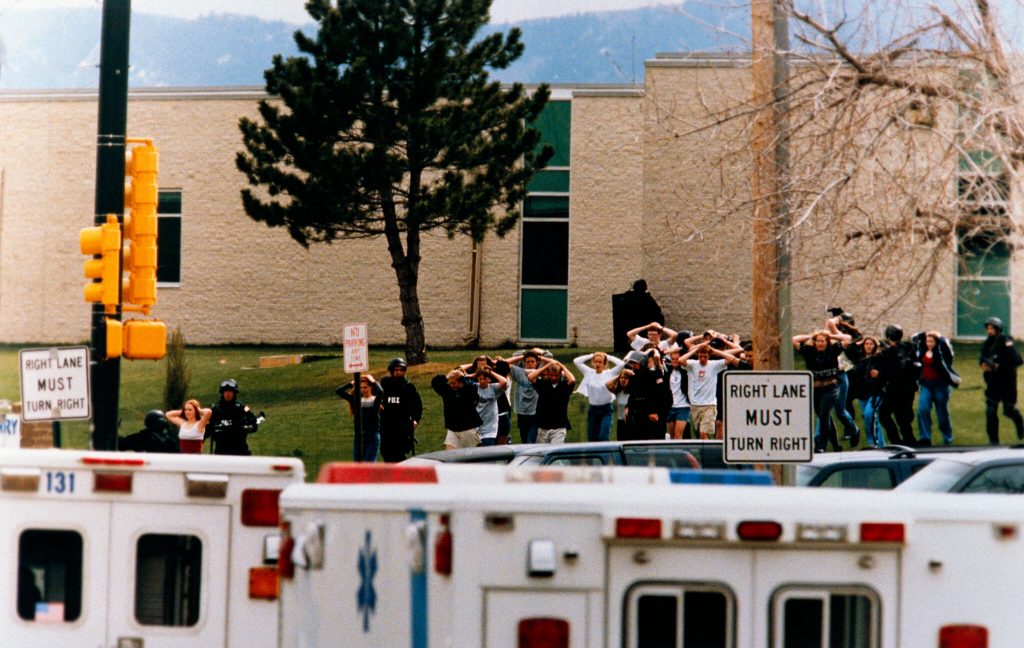
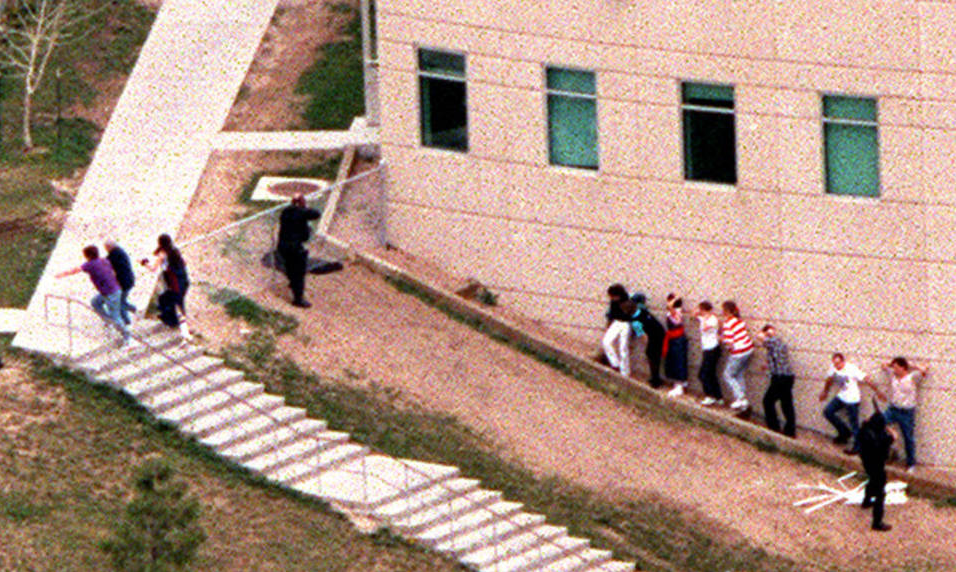
To the modern person, the Columbine shooting in regards to basic details doesn’t stand out. And that is because we are severed from what truly propelled this shooting from a local tragedy to a national one, the aforementioned 24 hour news cycle. The exact same one I described earlier. Modern generations used to the constant airplay that mass shootings get don’t realize that it all starts courtesy of Columbine. For months following the shooting, and years if you factor in editorials, Columbine was the mass shooting. When you talked about a school shooting, people would default and assume you meant Columbine. For this time, the victims and their families were on every station, every channel and every burgeoning early internet forum. The images of Eric Harris and Dylan Klebold that had been taken from their “Basement Tapes” repeated endlessly. In the constant barrage of details, violence and noise, people would grasp for anything that seemed to explain it away. Everything from violent video games, inflammatory music and so on. People shared the tapes, the journals and the WAD’s they played for years after the fact. However, peel back these many layers of constant excuses, overzealous media airplay and hackneyed explanations, and you find the Big Three in effect for these two.

Eric Harris and Dylan Klebold both attended Columbine High School, meeting together while in middle school and remaining fairly close into their high school lives. They would share hobbies such as video games, music and bowling, and would also soon develop a less-than-healthy relationship. Harris had been a popular kid, but latent anger issues as well as a tendency to threaten people had made him more and more of an outcast as time went on, fed into more by a constant cycle of bullying within the school. Klebold was painfully shy, insecure about his physical appearance due to some injuries he had as a child and constantly needing some source of validation for his self-esteem issues that he’d find in Harris. It was a parasitic relationship between two teenagers with little to no outlet for their aggression, and no help being raised by anyone within their school and home lives. These problems would continue to metastasize over the coming years, the pair becoming more reclusive, angry and revenge seeking. They would begin erecting a large plan of revenge on their bullies as well as the local law enforcement who had arrested them for petty crimes in the earlier parts of 1998. The prototype of the events in April 20th.

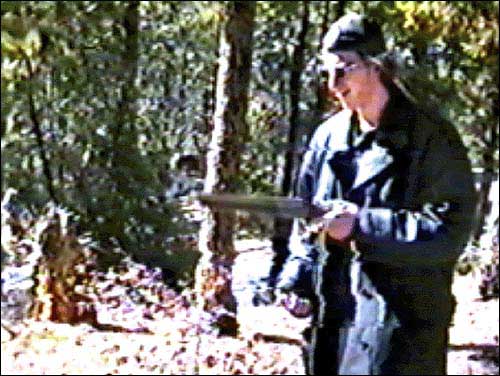
In essence, they wanted their final stand against the law enforcement, bullies and a system that had been making fun of them for the most of their lives. It was done as an outlet for a decade of abuse from a system they could not control, and did not have any ability to escape. The plan would be made with physical maps, as well as digital ones rendered in Doom’s map editor and shared on their AOL pages. Both of which held a personal journal that follows their train of logic to this point, a descent of depression that overtime turned into anger, rage and malcontent. They would acquire their firearms via 18-year-old fellow student Robyn Anderson. This would be a Savage Model 67 shotgun, a Savage 311-D double barreled shotgun and a Hi-Point 995 carbine. They’d also acquire another gun from another former student, 22-year-old Mark Manes. A TEC-9 Mini that had gone from Miami to Illinois, then to Colorado and then to Hines. Like the other guns, illegally acquired and sold. But it didn’t matter.
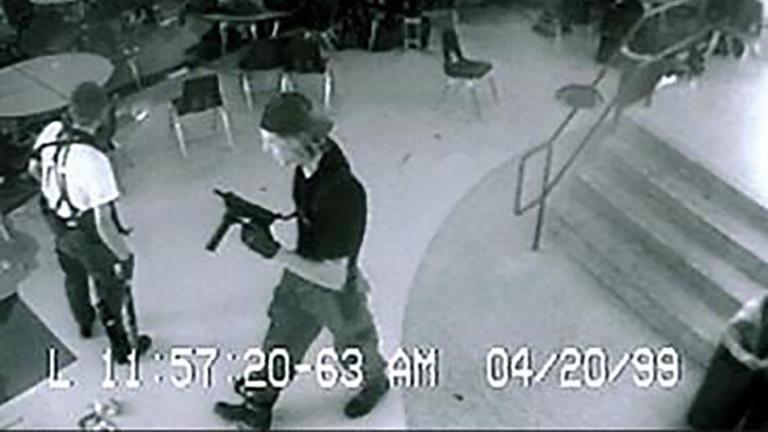
The media was hungry for anything that could explain what happened, to explain a tragedy that needed no more explanation. To give it a meaning that was not the meaning that it really was, dodging the problems. As the footage from Columbine’s security cameras was collected, a sliver of footage was taken as Eric Harris and Dylan Klebold made their final rounds of the school a few minutes before they would commit suicide in the library. In that photo, Klebold is seen holding the TEC-9 Mini. Even in the low-resolution video footage, the image of the TEC-9 in his hands became inherently tied to the shooting. When news agencies talked about it, they would post the photo. Every single time someone mentioned Columbine, they’d see the TEC-9. The Columbine Shooting would begin another sea of lawsuits against Intratec, and ones that they were not prepared to handle. With the sales of the CAT series beginning to flounder following the release of better compact handguns like the Glock 19 and SIG P228, the company was facing dire financial straits with a legal team struggling to keep up with the suits. In 2001, their case regarding a suit for the 101 California Street shooting had gone as high as the Supreme Court of California, who would rule in favor of Intratec. By this point, it was too little and too late. In 2001, Garcia would shut the company down, ending Intratec and the TEC-9 for good. There would be no attempt to revitalize the brand or the design in the wake of the events.
Will They Reminisce Over You?
Ever since the shutdown of Intratec in 2001, the TEC-9 has slowly slipped out of the mainstream as more modern and cheaper firearms have filled the same void. As stated, the original two niches of a TEC-9 have been largely filled by things such as the 33 round Glock 18 mag or any variety of AR or AK pistol. Despite that, the TEC-9’s enduring legacy remains strong. While many people could say that this applies to any gun of it’s ilk and era, the interesting difference is not the TEC’s life but it’s odd afterlife following the shutdown of Intaatec. For one side, the illegal side, the name Intratec has been crawling out of it’s grave, far from it’s American homeland.
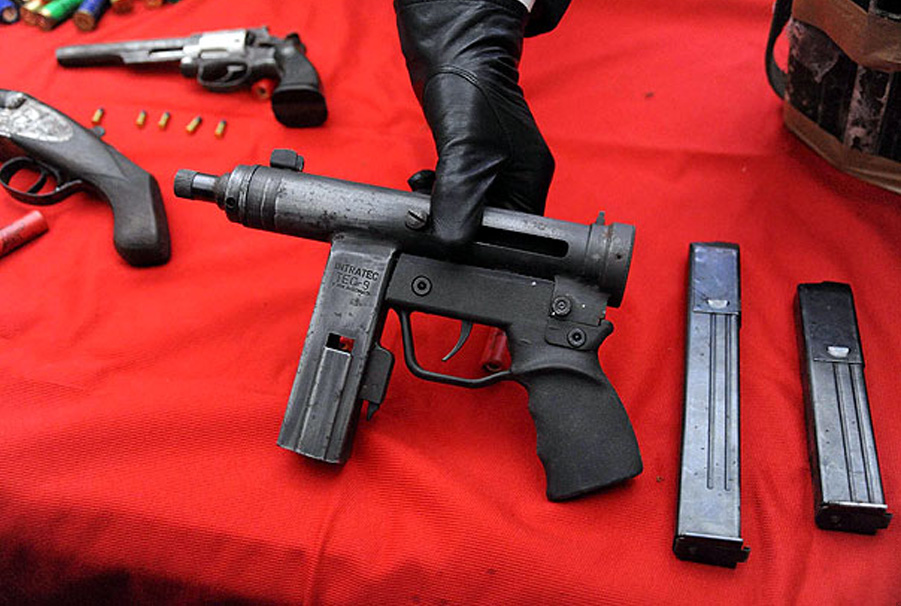
Starting in 2014~, a variety of illegal submachine guns have been acquired throughout Europe marked with TEC-9. While inherently basic designs, open bolt and stockless tube receiver submachine guns based on the Croatian Zagi M-91 and made with the same Zagi parts and frames, they all seem to sport a marking on the magazine well. While a concept you don’t realistically do for a firearm made illegally, these small submachine guns have been inscribed and stamped with “Intratec TEC-9” as a form of marketing and an attempt to upsell them to criminals who don’t know any better. TEC-9 derivative home-made SMG’s have also appeared in a variety of countries, and the design has begun to become popular again with the 3D printing crowd with a few prototype 3D printed TEC-9 frames appearing on the “market” so-to speak.
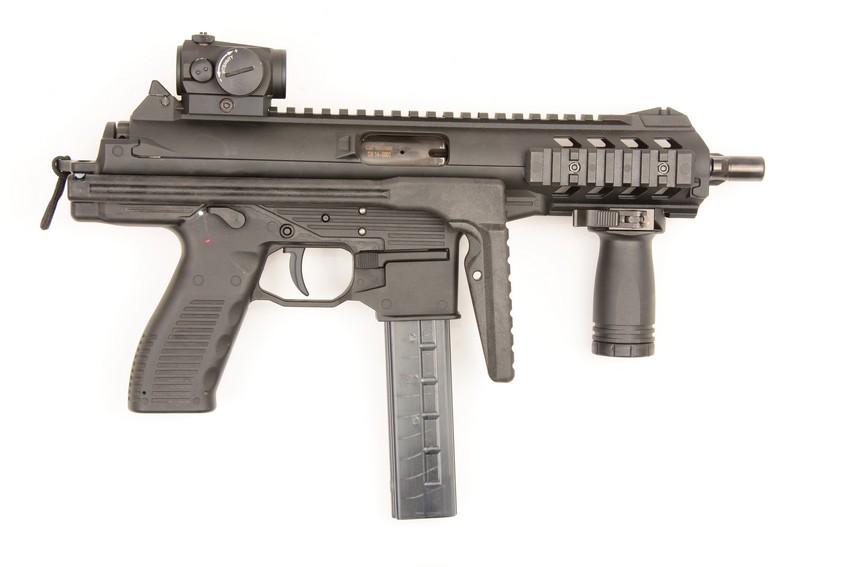
A year later in 2015, Swiss company Brugger and Thommet would release the P26 pistol and SMG onto the international market. As the company expanded its SMG market share with newer designs, they’d make the “budget friendly” P26 for both military and police sales. While it was claimed to be a new design, you only have to look at it for a few seconds to see the TEC-9 influence in it. It’s a straight blowback 9mm handgun with a two piece frame/receiver construction, polymer frame and a tri-lug/threaded barrel. While it is arguably much better made, it is still very much a TEC-9 derivative. The P26 wouldn’t last that long on the market as B&T would release a similar price point new design by the name of the GHM9, and would sell the tooling and technical package of the P26 to Beretta. Beretta, wanting to replace the elderly PM-12 and wonky Cx4 series, would slightly modify the design again to make the new PMX. This would be tested by the Carabinieri in 2018, who found it satisfactory and began buying into the design. Beretta USA also intends to sell a version of the PMX on the American civilian market, the same basic design but without the side folding stock, and a rear mounted sling swivel.
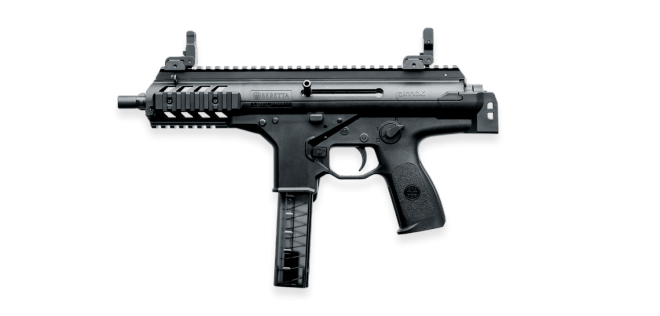
Sound familiar?
This Is How We Chill From ’93 Til
The TEC-9’s history is one sewn into the early days of the modern firearm, as the tides changed wood stocks to polymer and saw the greater usage of features that most people never truly saw in designs prior. It was never the first to any of the concepts that the design is now infamous for, but it’s an example of timing being the key thing. It was the wrong gun at the right time for every single bit of its long history, from the beginning sales success and issues with the KG-9 all the way to the TEC-DC9 and AB-10. It follows the same beats and waves as the other companies in the industry and community did, but the smaller and tighter scale of Intratec financially made it so those waves hit harder and threw it higher.
In any other time frame, no one would talk about or care about a TEC-9. It would be just another dorky 9mm plinker for people to mag dump into trash with, arguably how many users still use it to this day. In the same tier as RAK-9 Dracos, Masterpiece Arms’s litany of MAC-10 derivatives and other cheap PCC’s. Arguably speaking, it still is that exact same kind of cheap 9mm semi-auto plinker. But because of the time it came out, the issues there-in and the overall nature of the industry and world at the time, it stood out, stuck out and soon was thrown out of that world. It’s generic shape is now distinctly 1980’s and 90’s based, inherently as on-par with the era as the Countach and the edges of a JVC boombox. It is a design intended for a niche role and filling one that none of it’s designers truly intended after all of these years, an unremarkable gun for an unremarkable need, but one generic enough to allow anything and everything to be imprinted on it, from street cred to nostalgia.

This is still the epitome of a cheap 9mm blaster even now that Hi-Points, SAR’s and other new shitbox 9mm handguns have filled the void it left behind. It is a gun that still screams “cheap and intended to be sprayed wildly at anyone you see” despite being long past that point of no return. It’s old, it knows it and it won’t stop. It is Big Daddy Kane in the form of a terribly made plastic 9mm handgun that will crack it’s frame if you’re not careful with what ammo you choose. Terribly made, terrible to use, mediocre in every way and yet just because of the look and the public image in your mind of it, it becomes cool. Not by being cool, but by being cool by proxy.
And what are you going to say now when someone mentions a firearms lawsuit going bad as a form of shorthand?
TEC-9.

